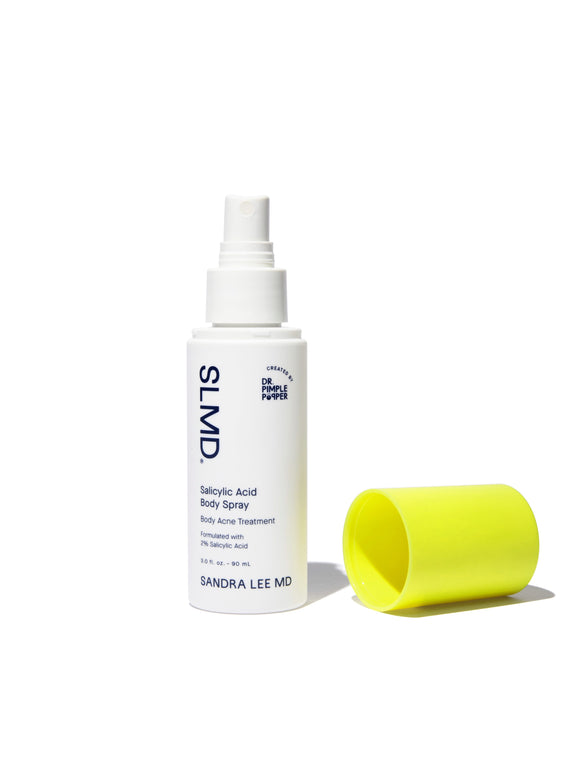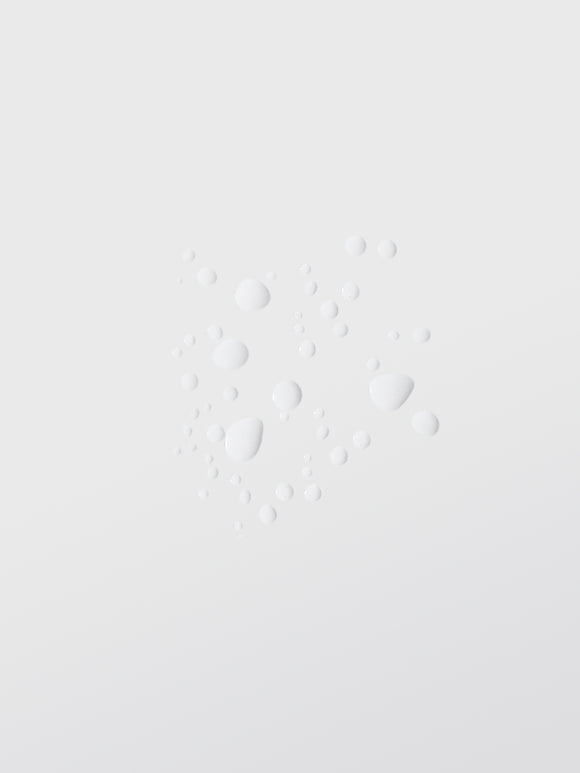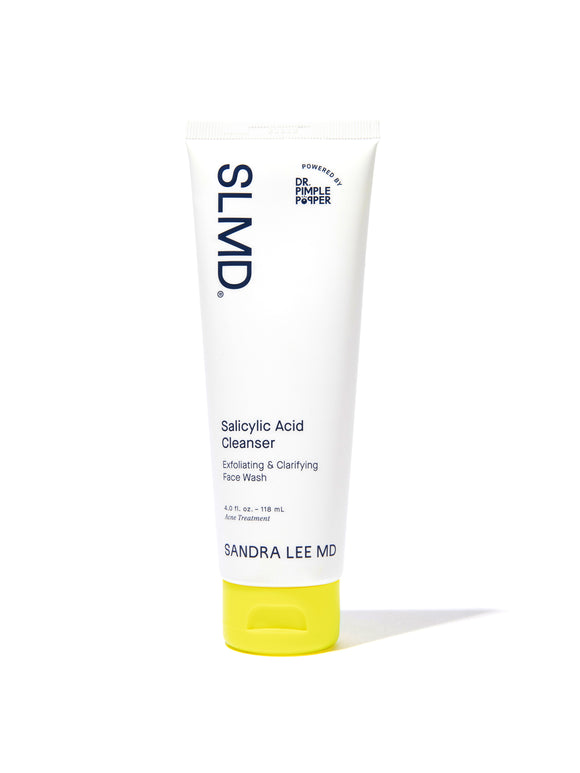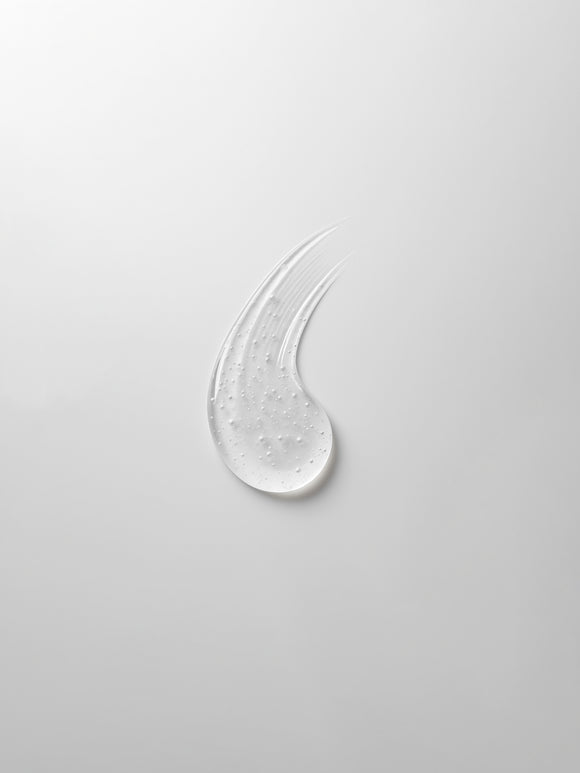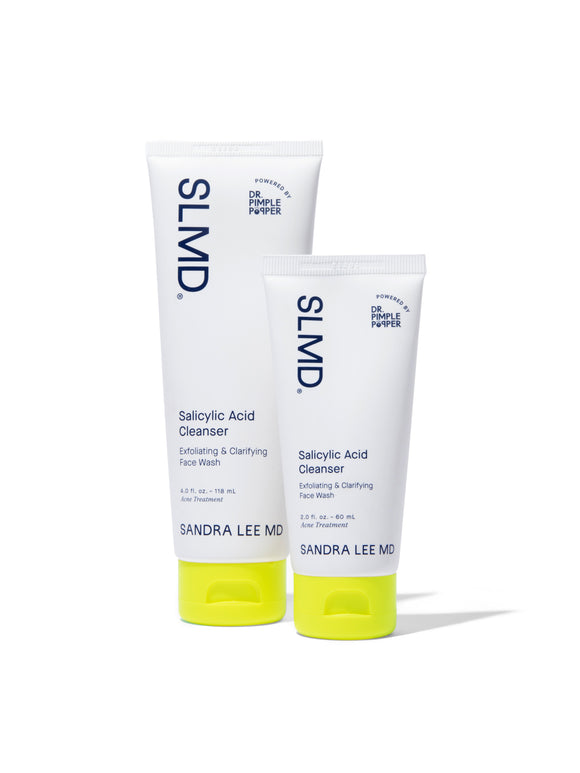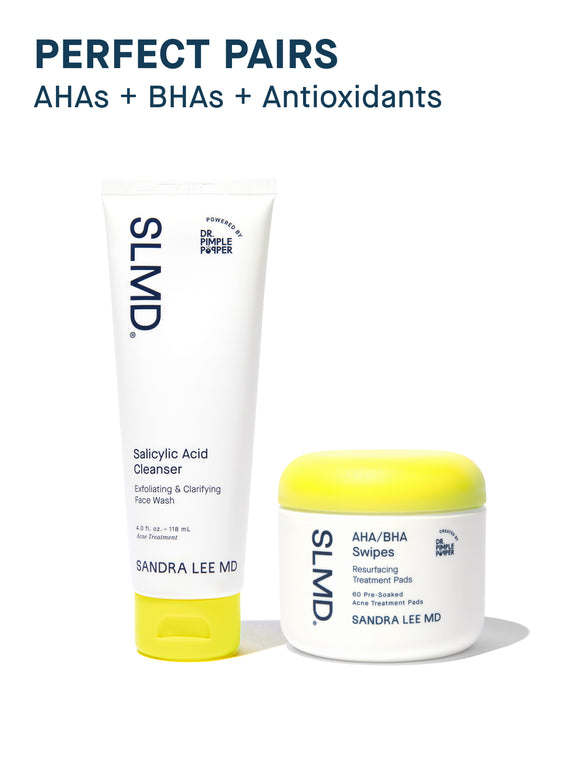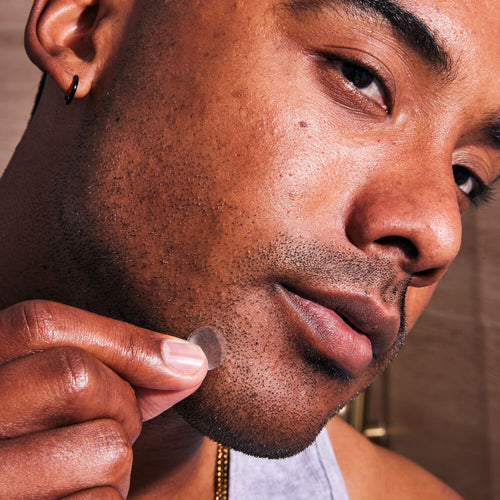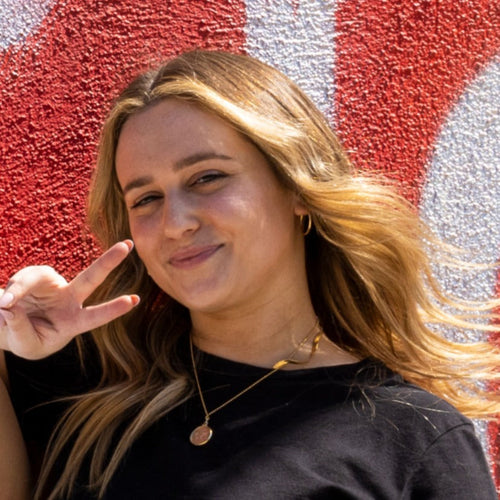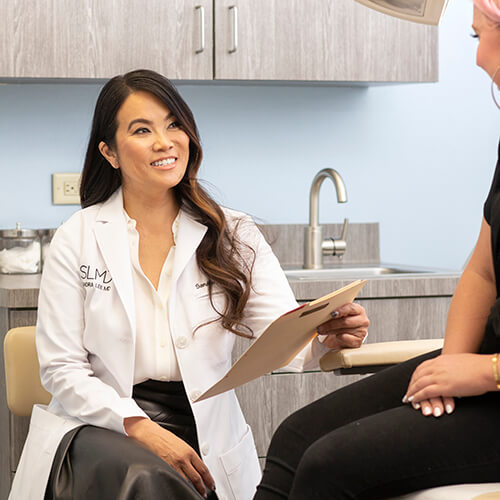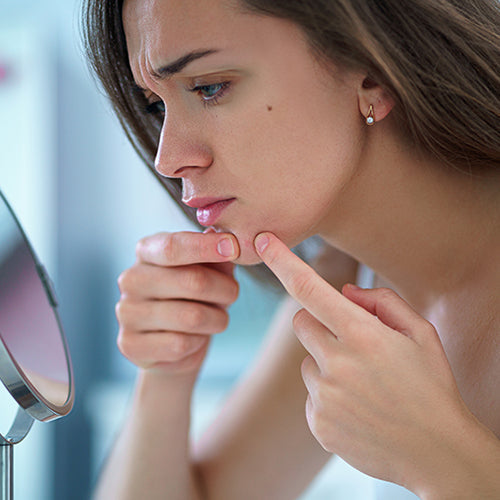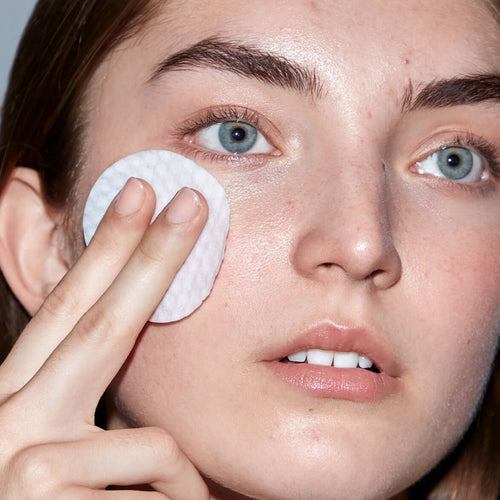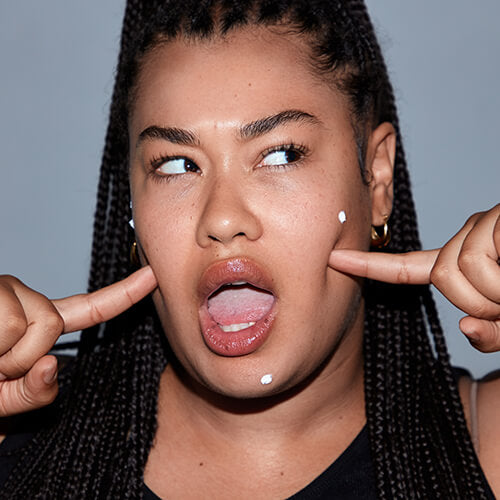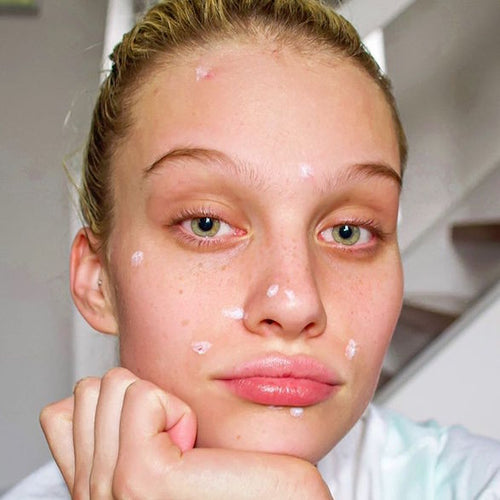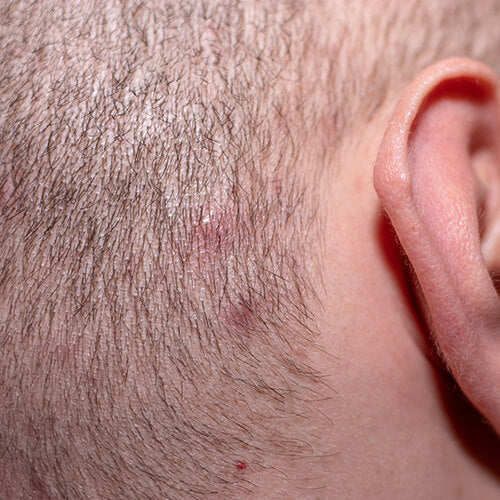
How to Get Rid of Scalp Acne — And Keep It From Coming Back
Breakouts and bumps on your scalp? Dr. Pimple Popper offers her expert tips.
Published:
3 minute read
Ever get a red, painful bump on your scalp that feels like a pimple? Chances are, it is: scalp acne is more common than you think. According to dermatologist Sandra Lee, MD (aka Dr. Pimple Popper), scalp breakouts can happen whether you deal with acne regularly or only occasionally.
Below, Dr. Lee explains what causes scalp acne, how to treat and prevent it, and when to see a dermatologist.
Article Quick Links
What causes scalp acne?
All acne follows a similar pattern: excess oil (sebum) and dead skin clog pores (hair follicles), and bacteria can contribute to inflammation. Sebaceous glands are abundant on the scalp, so breakouts are common there.
Scalp acne often falls into one of these categories:
- Acne mechanica: friction/occlusion from hats, helmets, headbands, or hair extensions
- Acne cosmetica: buildup from pore-clogging hair products
- Acne vulgaris: common acne influenced by genetics and hormones
Dr. Lee notes that other aggravators include sweat, heat, and limited airflow — especially with thick hair or frequent headwear.
What does scalp acne look like?
Just like facial or body acne, scalp acne may be one of two types:
- Non-inflammatory: blackheads and whiteheads (comedones)
- Inflammatory: red papules, pustules, nodules or cysts
It can be occasional (a pimple or two) or widespread and chronic.
Dr. Pimple Popper's Scalp Acne Solutions
How to treat and prevent scalp acne
According to Dr. Lee, treating and preventing scalp acne starts with finding the trigger — often product buildup, excess oil, sweat, or friction. Once identified, you can adjust your routine and use targeted treatments to clear breakouts and keep them from returning.
Common comedogenic hair-product ingredients to watch for:
- Coconut oil
- Synthetic fragrance
- Silicones
- Cocoa butter
- Soybean oil
Here’s Dr. Pimple Popper’s step-by-step approach:
Check your haircare products.
Pause styling and haircare products, then reintroduce one at a time to spot the problem. Choose non-comedogenic, lighter formulas when possible.
Wash your hair consistently
Both over- and under-washing can backfire. Experiment to find a shampoo cadence that keeps your scalp clean without over-drying.
Cleanse all the way to your hairline
Breakouts often pop up where makeup, sunscreen, sweat, and hair products meet. Washing your face all the way to the hairline helps clear pore-clogging residue. Try: SLMD Salicylic Acid Cleanser.
Use a medicated shampoo
Look for salicylic acid to help clear pore-clogging buildup. Tea tree oil and sulfur can also help. Avoid antibacterial soaps with triclosan (it’s a hormone disruptor).
Apply a spot treatment
For an occasional scalp pimple, Dr. Lee recommends salicylic acid (less likely than benzoyl peroxide to bleach hair). Try SLMD Salicylic Acid Spot Treatment. For more coverage along the hairline, try SLMD AHA/BHA Swipes.
Clean your hats and gear
Wash hats, headbands, and helmets regularly to reduce bacteria. Between washes, spritz the inside with SLMD Salicylic Acid Body Spray and let dry before wearing.
When to see a dermatologist for scalp acne
If your scalp acne doesn’t improve after a couple of months of consistent care, see a dermatologist, advises Dr. Lee. You may need prescription-strength treatment—or you might be dealing with a different condition entirely.
Scalp conditions that look like acne
According to Dr. Lee, not all scalp bumps are acne. Similar-looking conditions include:
- Ingrown hairs: inflammation from a hair growing back into the skin
- Pilar cysts: firm, keratin-filled lumps near the hair root
- Skin cancer: irregular lesions or bumps that warrant prompt evaluation
- Seborrheic dermatitis: red, scaly patches with flaking
- Pityrosporum folliculitis: yeast-driven follicle inflammation, often itchy
Unsure what you’re seeing? Get examined before self-treating.
Dr. Pimple Popper answers scalp acne FAQ
Q: Can scalp acne cause hair loss?
A: Yes. Ongoing inflammation can damage follicles and lead to shedding. Treat early to reduce risk.
Q: Is scalp acne the same as folliculitis?
A: No. Folliculitis describes inflamed follicles and can be bacterial, fungal (yeast), or irritant-related. A dermatologist can differentiate and tailor treatment.
Q: What’s the best shampoo for scalp acne?
A: Choose non-comedogenic formulas with salicylic acid or other gentle exfoliants. If yeast is involved, a shampoo with zinc pyrithione or ketoconazole may help.
Q: How long does scalp acne take to clear?
A: With consistent care, many people see improvement in 4–8 weeks. Persistent or severe cases should be evaluated by a dermatologist.
Q: Can helmets and hats cause scalp acne?
A: They can contribute via friction, heat, and trapped sweat. Keep gear clean, allow it to dry fully, and minimize prolonged occlusion when possible.

Dr. Lee's Last Word
Not a lot of people talk about scalp acne, but it’s more common than you think — especially if you have acne elsewhere. Identify your triggers, keep your scalp clean, and treat flare-ups right away. If it isn’t improving, see a dermatologist.



